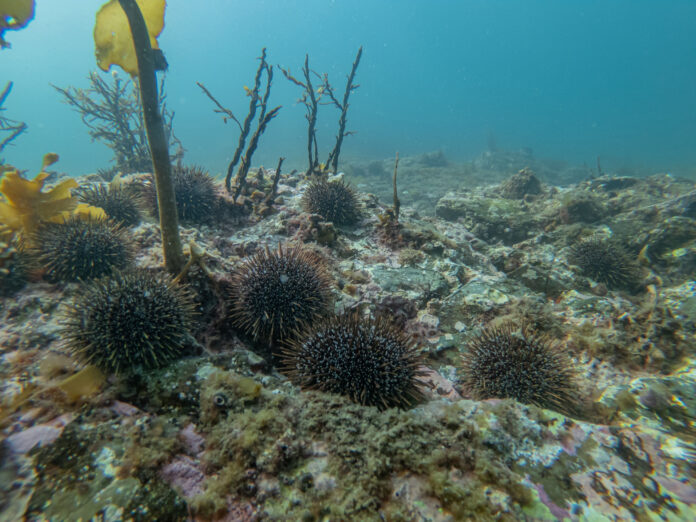Source: Auckland Council
By Nicola McDonald and Pippa Coom
How lucky are we to have the Hauraki Gulf on our doorstep?
Our big blue playground on the east coast of the Auckland and Waikato regions is home to gorgeous beaches, pest-free islands, Bryde’s whales, and is the seabird capital of the world. The Gulf, also known as Tīkapa Moana or Te Moananui-ā-Toi, has been internationally recognised as one of the great ecosystems on earth.
To top it off, we have now had the most incredible America’s Cup yachts whizzing over its surface at close to 100km/h. But look below that surface and a different story emerges. A great ecosystem is collapsing. We are extracting too much from the Gulf and putting too much harmful stuff back into it.
Look below that surface and a different story emerges. A great ecosystem is collapsing.
When we do that, we start to see things like kina barrens: areas of rock coated with scrawny kina that have eaten all the kelp. They go on a rampage because their predators like crayfish are no longer around to keep them in check.
The good news is that we understand the problems, and we know what the solutions are.
One of the most important solutions for improving the health of the Gulf is more marine protection. Here in the Hauraki Gulf, we protect just 0.3 per cent in marine reserves, with some additional protection coming from rāhui and fishery closures. Increasing marine protection has proven incredibly hard. For example, just one tiny marine reserve (Te Matuku – Waiheke) has been created in the Gulf the past 20 years.
Contrast that with the whenua, where around one third of Aotearoa’s land area is in the conservation estate – i.e. National Parks. We treasure those National Parks as places where nature can thrive. But we don’t seem to treasure the Hauraki Gulf Marine Park quite as much.
We treasure those National Parks as places where nature can thrive. But we don’t seem to treasure the Hauraki Gulf Marine Park quite as much.
The Hauraki Gulf Forum which we co-lead is clear that we need to see at least 30 per cent marine protection in the Gulf. Protection can come through traditional practices, such as the two rāhui recently put in place by Ngāti Paoa around Waiheke and Ngāti Hei on the Eastern Coromandel, and regulatory tools like marine reserves. We can also protect specific parts of the marine environment through changes to fishing regulations: for example, the Forum has called for the complete removal from the Marine Park of all fishing methods that damage the seafloor.
Who is responsible for putting in place increased marine protection? Primarily, central government. The Minister for Oceans and Fisheries has the power to alter fisheries policy, while the Minister of Conservation has responsibility for the creation of new marine reserves.
If central government had its policy settings right, mana whenua would not be having to lay down rāhui to protect what little kaimoana we have left, and passionate sailors Peter Burling and Blair Tuke would not be having to take out full pages in local papers to call attention to the Gulf’s collapse.
Local government also has a key role to play. There is little point protecting marine areas if we are then deluging them with sediment and pollution.
At the Hauraki Gulf Forum, we have found broad support in the community and among our mana whenua, local and central government members for our 30 per cent protection goal. It also aligns with international best practice.
Central government has recently announced in Parliament that it is very close to releasing its long-awaited Response Strategy to the Sea Change Tai Timu Tai Pari Marine Spatial Plan for the Hauraki Gulf. This is good news. Now is the time to make it happen.
Nicola MacDonald and Pippa Coom are the Co-Chairs of the Hauraki Gulf Forum
This article was earlier published on The New Zealand Herald.



